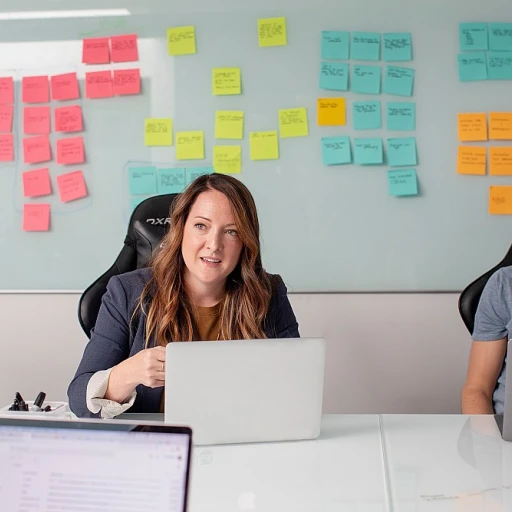
Understanding the Growth Mindset
Embracing the Power of a Flexible Mindset
Developing a growth mindset is pivotal for successful leadership in today's rapidly evolving landscape. At its core, this mindset revolves around the belief that abilities and intelligence can be nurtured and developed through dedication, persistence, and hard work. This stands in stark contrast to a fixed mindset, which assumes that talent is an innate characteristic. Creating a mindset culture where continuous learning and improvement are valued encourages both leaders and employees to constantly seek opportunities for growth. By fostering an environment where team members feel comfortable in their efforts and encouraged to experiment, leaders can drive innovation and long-term success. Understanding the impact of a growth mindset requires a look at how mindset leadership can propel organizations forward. Leaders create an atmosphere where feedback is not just welcome but seen as an essential component of the development process. This constructive feedback mechanism must be coupled with open communication channels that allow for the sharing of ideas and problem-solving strategies. For companies aiming to succeed in the future of work, leadership development programs must focus on cultivating growth and continuous improvement among their teams. Investing in learning opportunities that emphasize mindset shifts will prepare leaders to guide their organizations through future challenges effectively. By leveraging programs such as those that enhance leadership skills with manager training, companies can equip their leaders with the tools they need to emerge as champions of growth. Ultimately, understanding the growth mindset and promoting it organization-wide leads to the creation of a learning development culture that thrives on opportunities and embraces challenges as essential components of success.Leadership's Role in Shaping Mindsets
The Influence of Leadership on Mindset Development
In the evolving landscape of work, leaders play a pivotal role in shaping the mindsets of their teams. A leader's approach can significantly influence whether a growth mindset or a fixed mindset prevails within an organization. By understanding the nuances of mindset culture, leaders can create an environment that fosters continuous learning and development.
Leadership is not just about directing tasks; it's about nurturing a culture where employees feel empowered to learn and grow. This involves encouraging team members to embrace challenges and view them as opportunities for growth. Leaders who prioritize continuous improvement and learning development are more likely to cultivate a mindset that values innovation and problem-solving.
Creating an Environment for Growth
Leaders create an environment conducive to growth by promoting open communication and providing constructive feedback. This approach helps in identifying areas for improvement and encourages employees to take ownership of their development. By offering learning opportunities and recognizing efforts, leaders can inspire a culture of continuous learning.
Moreover, leadership development programs can equip leaders with the necessary skills to nurture a growth mindset. These programs emphasize the importance of feedback, learning, and development, enabling leaders to guide their teams effectively. By focusing on long-term success, leaders can ensure that their teams are prepared to adapt to future challenges and seize opportunities for growth.
Encouraging a Culture of Innovation
When leaders actively promote a growth mindset, they pave the way for innovation within their organizations. A mindset that embraces learning and development encourages employees to explore new ideas and solutions. This culture of innovation not only drives success but also positions organizations to thrive in a rapidly changing world.
In summary, leadership's role in shaping mindsets is crucial for fostering a culture of growth and innovation. By prioritizing continuous learning and development, leaders can create an environment where employees are motivated to achieve their full potential.
Strategies for Cultivating a Growth Mindset
Engaging Strategies for Leaders to Inspire Growth
Creating a culture where continuous learning and development thrive requires intentional efforts from leaders. It begins with the understanding that a growth mindset is not merely an individual characteristic but a collective culture organizations must cultivate.- Encourage Open Communication: Leaders should foster an environment where team members feel comfortable sharing ideas, providing feedback, and discussing challenges. Open communication enables a deeper connection within teams, promoting transparency and trust, essential for a mindset that supports development and innovation.
- Provide Continuous Learning Opportunities: Growth does not happen in isolation. Organizations should offer training sessions, workshops, and seminars to ensure employees continuously upgrade their skills. Emphasizing continuous improvement empowers teams to embrace new ideas and innovate.
- Constructive Feedback and Recognition: Leaders can inspire a mindset of growth by frequently acknowledging efforts and offering constructive feedback. Recognizing both achievements and areas for improvement helps employees learn and grow from their experiences, paving the way for problem-solving and innovation.
- Model Growth Mindset Behavior: Leadership development often begins with leaders themselves embracing a growth mindset. When leaders model behaviors, such as resilience in the face of challenges or a willingness to learn from failures, it sets the tone for a culture primed for transformation.
- Empower Team Members: Empowerment involves giving employees autonomy to make decisions and encouraging them to seek opportunities for growth within their roles. When team members feel supported in their endeavors, they are more likely to innovate and drive success within the organization.
Challenges in Fostering a Growth Mindset
Overcoming Barriers to Growth
Fostering a growth mindset within organizations is not without its hurdles. Leaders often encounter resistance when attempting to shift from a fixed mindset to one that embraces continuous learning and development. This resistance can stem from deeply ingrained beliefs and practices that prioritize short-term success over long-term growth.
Addressing Fixed Mindset Challenges
One of the primary challenges is overcoming the fixed mindset that many employees and even leaders may possess. This mindset can hinder the culture of continuous improvement and learning. Leaders must actively work to create an environment where team members feel safe to express their ideas and learn from failures. Encouraging open communication and constructive feedback is crucial in this process.
Creating a Supportive Environment
Leaders play a pivotal role in cultivating a mindset culture that supports growth and development. They must lead by example, demonstrating a commitment to learning and improvement. This involves providing learning opportunities and promoting a culture where feedback is seen as a tool for growth rather than criticism. By doing so, leaders can help their teams embrace change and view challenges as opportunities for development.
Balancing Short-Term and Long-Term Goals
Another challenge is balancing the immediate demands of the organization with the long-term benefits of a growth mindset. Leaders must communicate the value of investing in continuous learning and development, even when short-term pressures are high. This requires a strategic approach to leadership development, ensuring that the pursuit of innovation and improvement aligns with the organization's overall goals.
Encouraging Continuous Improvement
Finally, fostering a growth mindset requires a commitment to continuous improvement. Leaders must create systems and processes that support ongoing learning and development. This includes providing resources for skill development and encouraging a culture of experimentation and problem-solving. By doing so, organizations can create an environment where innovation thrives and employees are empowered to reach their full potential.












